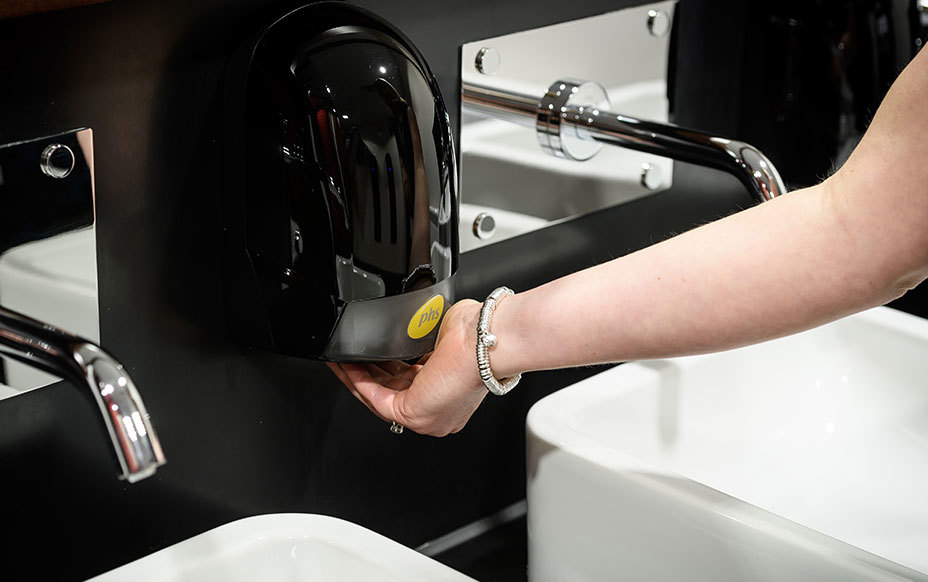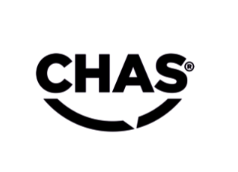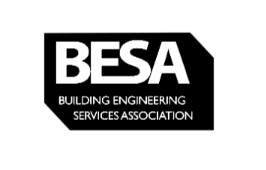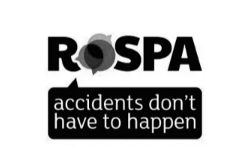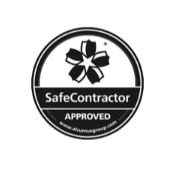phs Group has acquired Citron Hygiene UK - we’re here to support you. Read our customer FAQs and find our contact details here.
As September arrives and children return to school, it’s essential to focus on promoting healthy habits that will keep both students and staff safe. One of the most crucial aspects of maintaining a healthy school environment is ensuring proper hand washing and hand hygiene, which is vital for disease control in school environments.
We all know that as we approach the winter months, germs and illnesses become more prevalent – with coughs, sniffles, sneezes and much worse quickly becoming a widespread problem in the classroom. Teaching and reinforcing good hand washing and hand hygiene steps in schools therefore becomes even more critical. An alcohol based hand sanitiser can be an effective alternative to soap and water, especially when it contains at least 60% alcohol.
This blog will explore the importance of hand hygiene in schools, provide a step by step guide to encourage proper practices, and discuss how phs can help with products and appliances that support these efforts.
Why hand hygiene in schools is essential
Hand hygiene is a simple yet highly effective way to prevent the spread of illnesses in schools. Children, especially younger ones, are often in close contact with each other, sharing toys, school supplies, and surfaces that can harbour germs. In addition, schools are environments where germs can spread quickly due to the number of people in close contact with one another and sharing equipment. This leads to outbreaks of illnesses such as colds and other respiratory viruses, flu, and stomach bugs. Proper hand hygiene helps to prevent healthcare associated infections by reducing the transmission of harmful bacteria and viruses to other people and surfaces, protecting students, staff, and their families from getting sick. It is essential to wash your hands regularly to maintain personal health and hygiene.
As the winter months approach, when respiratory illnesses like colds and the flu are more common, the importance of hand hygiene in schools cannot be overstated. Health care providers play a crucial role in promoting hand hygiene in schools by providing training, resources, and ensuring adherence to safety protocols.
Hand hygiene steps to encourage in schools
Teaching students and staff the correct hand hygiene steps is crucial to promote hand hygiene practices in schools. Personal hygiene is equally important in maintaining overall health and preventing the transmission of illness. It is also essential to use alcohol based hand sanitisers, especially when soap and water are unavailable, ensuring they contain at least 60% alcohol and are used under supervision to prevent accidental poisoning.
Here’s a step by step guide to encouraging proper hand hygiene in schools:
1. When to wash hands
It’s important to educate students and staff on when they should clean their hands. Some key times include:
· Before eating – to prevent germs from entering the body through food.
· After using the toilet / washroom – to remove any bacteria or viruses that may have been picked up.
· After playing outside – to eliminate dirt and germs from surfaces they’ve touched.
· After coughing, sneezing or blowing noses – to prevent the spread of respiratory droplets that may contain viruses.
· When hands are visibly dirty – to remove contaminants such as dirt or bodily fluids.
· Before and after touching shared items – such as classroom supplies, canteen equipment, sports equipment, or computers.
· Wash your hands regularly – to maintain personal health and hygiene by preventing the spread of germs and infections.
2. How to properly wash hands
It sounds straightforward, but washing hands with soap and water is a critical part of effective hand hygiene. Putting up signs in washrooms (and supplementing images for text where necessary for children) will help ensure everyone follows the same, effective routine.
Here are the steps to include, to ensure hands are thoroughly cleaned:
· Wet hands with clean water – use warm or cold water to wet the hands before applying soap.
· Apply soap – use enough soap to cover all surfaces of the hands.
· Scrub for at least 20 seconds – focus on scrubbing all parts of the hands, including the backs, between the fingers, and under the nails. Singing “Happy Birthday” twice can help time this correctly.
· Rinse thoroughly – use clean running water to rinse away the soap and any germs.
· Dry hands completely – use a clean towel or air dryer to dry hands. Avoid touching the tap or door handle with freshly washed hands.
3. Using hand sanitiser when soap and water aren’t available
While soap and water are the most effective for cleaning hands, alcohol based hand sanitisers are a good alternative when these aren’t available. Hand sanitisers should contain at least 60% alcohol to be effective. Here’s how to use hand sanitiser correctly:
· Apply enough sanitiser to cover all surfaces of the hands.
· Rub hands together until dry – make sure to cover all parts of the hands, including the backs and between the fingers.
· Do not rinse or wipe off before it dries.
It is important to supervise young children when using hand sanitisers to prevent accidental poisoning.
4. Choosing the right products
Schools should be equipped with the right products to support hand hygiene, including:
· Liquid soap – preferably with antibacterial properties.
· Hand sanitisers – especially in areas where soap and water aren’t readily available. Ensure the hand sanitiser contains at least 60% alcohol to effectively reduce germs.
· Paper towels or air dryers – for effective drying after hand washing.
· Handwashing stations – located in convenient areas such as near cafeterias and washrooms.
5. Education and reminders
Continuous education and reminders are key to maintaining hand hygiene in schools. We’ve discussed putting up signs, but there are several things schools can do to reinforce the message to ensure good hygiene standards are maintained. Hand hygiene is crucial in helping students stay healthy.
Here are some ways to reinforce these habits:
· Posters and signs – display hand hygiene reminders in toilets / washrooms, classrooms, cafeterias, and entrance ways where children come in from playtime.
· Interactive lessons – incorporate the importance of hygiene, including hand hygiene education into the curriculum, especially for younger students. This will provide children with an understanding of why hygiene needs to be maintained.
· Regular announcements – use morning announcements or assembly time to remind students and staff of the importance of washing your hands and hand hygiene.
Common Hand Hygiene Mistakes
Hand hygiene is a cornerstone of personal hygiene and a critical measure for preventing the spread of illnesses. However, even with the best intentions, many people make common mistakes that can significantly reduce the effectiveness of their hand hygiene practices. Here are some of the most frequent errors and how to avoid them:
1. Not Washing Hands Long Enough
One of the most common mistakes is not washing hands for a sufficient amount of time. The Centers for Disease Control and Prevention (CDC) recommend washing hands for at least 20 seconds, which is roughly the time it takes to sing the “Happy Birthday” song twice. Unfortunately, many people wash their hands for less than 10 seconds, which is not enough to effectively remove germs and dirt. To ensure thorough cleaning, make it a habit to time your hand washing or use a song to keep track.
2. Not Using Enough Soap
Another frequent mistake is not using enough soap. Soap is essential for creating a rich lather that helps lift and remove germs and dirt from the skin. Using too little soap can compromise the effectiveness of hand washing. Make sure to use enough soap to cover all surfaces of your hands, including the backs, between the fingers, and under the nails.
3. Not Drying Hands Properly
Properly drying hands is a crucial step in hand hygiene that is often overlooked. Leaving hands damp can promote the growth of bacteria and other microorganisms. It’s important to dry your hands thoroughly with a clean towel or an air dryer. Pay attention to all the surfaces of your hands to ensure they are completely dry before touching any surfaces or objects.
Overcoming Hand Hygiene Barriers
Despite the well known benefits of hand hygiene, many people encounter barriers that prevent them from practicing it effectively. Here are some common obstacles and practical solutions to overcome them:
1. Lack of Access to Soap and Water
A significant barrier to proper hand hygiene is the lack of access to soap and water. This can be particularly challenging in areas where water is scarce or in situations where soap and water are not readily available. To overcome this barrier, it’s advisable to use hand sanitiser or alcohol based hand rubs. These products are effective at killing germs and bacteria on the hands when soap and water are not an option. Ensure that the hand sanitizer contains at least 60% alcohol for maximum effectiveness.
By addressing these common hand hygiene mistakes and barriers, individuals can significantly improve their hand hygiene practices and reduce the risk of spreading illnesses. Promoting good hand hygiene is essential for maintaining personal hygiene and ensuring the health and safety of everyone in the school environment.
How phs can help schools with hand hygiene
phs offers a wide range of products and services that can help schools maintain high standards of hand hygiene, ensuring a healthier environment for students and staff. These products and services contribute significantly to disease control by preventing the spread of infections within the school setting.
Hand Hygiene Products
phs provides a variety of hand hygiene products that are perfect for schools:
· Hand sanitisers and dispensers – we offer a selection of hand sanitisers and touch free dispensers that can be placed throughout the school to encourage regular use. Our range includes alcohol based hand sanitisers, which are effective alternatives to soap and water when the latter is unavailable. Proper usage and safety precautions, such as adult supervision and safe storage, are essential to prevent accidental poisoning in children.
· Soap dispensers – we supply durable and easy to use soap dispensers that can be installed in washrooms and handwashing stations.
· Paper towel dispensers and air dryers: we offer efficient hand drying solutions, including paper towel dispensers and energy efficient air dryers that help reduce waste and promote hygiene.
Hand hygiene services
In addition to providing products, phs offers services that can help schools maintain proper hand hygiene standards:
· Regular replenishment – we can manage the regular supply of soap, hand sanitisers, and paper towels, ensuring that schools never run out of essential hand hygiene products.
· Installation and maintenance – we can install and maintain hygiene appliances such as dispensers and hand dryers, ensuring they are always in working order.
· Hygiene audits – we can conduct regular hygiene audits to ensure that schools are meeting the necessary standards and making improvements where needed.
Health care providers play a crucial role in maintaining hand hygiene standards by ensuring compliance with infection control procedures, which is essential for improving patient safety and health outcomes.
By prioritising hand hygiene in schools and following the correct hand hygiene steps, especially during the back to school season and the upcoming winter months, schools can significantly reduce the spread of illnesses and create a safer, healthier environment for everyone.
Get in touch for more information on how phs can help your school maintain excellent hand hygiene. With the right products and services, we can help create a healthier environment for students and staff, reducing the spread of germs and illnesses throughout the school year.





























